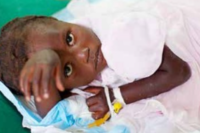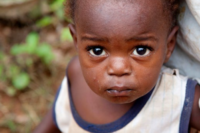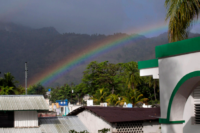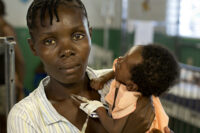By Bernes Chalumeau, M.D.
The post-earthquake period revealed a reality which daily operations has a tendency to, if not conceal, at least minimize: the success of Hôpital Sacré Coeur is not only national, but has reached foreign shores. The hospital has acquired a widely-known reputation that exceeds that of just being a fine Community Health Reference Center.
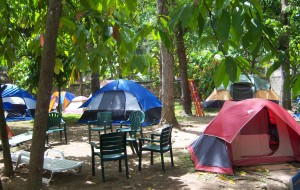 HSC is now widely seen as a well-regarded full service, specialty hospital. The cultural diversity of the volunteers and the HSC staff play an important role in this institutional evolution. The staff is proud to have carefully established over time, a well organized structure that galvanized HSC’s reputation as a quality medical center and enabled the hospital to incorporate the arrival of 1,500 medical volunteers in the months following the earthquake.
HSC is now widely seen as a well-regarded full service, specialty hospital. The cultural diversity of the volunteers and the HSC staff play an important role in this institutional evolution. The staff is proud to have carefully established over time, a well organized structure that galvanized HSC’s reputation as a quality medical center and enabled the hospital to incorporate the arrival of 1,500 medical volunteers in the months following the earthquake.
As everyone knows, the results of this merger of volunteers with the Haitian hospital staff were astonishing and exemplary! Some observers do not stop speaking well of the involvement and commitment of the volunteers working side by side with the Haitian staff for the well-being of the victims of the earthquake. But, many think that the earthquake alone brought these people to Milot in a one shot, short lived expression of humanitarian aid. After all, such was the case for many NGOs who provided earthquake relief in Haiti.The situation at Hôpital Sacré Coeur however was and is very different than that of other NGOs in Haiti.
The volunteers’ extraordinary compassion melded with a fine institution that was carefully crafted over twenty five years. And the volunteers compassionate giving of their talents, resources and time has occurred on a weekly basis since the founding of Hôpital Sacré Coeur. The appearance of volunteers on the hospital campus was not a onetime event but the carrying out of a long established tradition. And, unlike other NGOs in Haiti, the HSC volunteers will not disappear as memory of the earthquake fades from international focus. The medical and nonmedical volunteers remain an integral part of what makes up the Hôpital Sacré Coeur community.
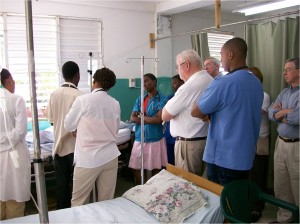 Even so, the staggering numbers of volunteers that resided on campus immediately following the earthquake provided us all with opportunities for learning and growth as cultures bumped up against each other. At times, the fast pace of the volunteers caused the local staff, who work at a moderate rhythm, to feel rushed. Other times, the volunteers’ vigorous, persistent and apparently dominant spirit did not make easier the relationship with the Haitian professionals who are not so self-confident and often gripped by doubt. Such examples however provided a wonderful opportunity for the Hospital Council to do an in depth analysis about cultural differences between people and their countries.
Even so, the staggering numbers of volunteers that resided on campus immediately following the earthquake provided us all with opportunities for learning and growth as cultures bumped up against each other. At times, the fast pace of the volunteers caused the local staff, who work at a moderate rhythm, to feel rushed. Other times, the volunteers’ vigorous, persistent and apparently dominant spirit did not make easier the relationship with the Haitian professionals who are not so self-confident and often gripped by doubt. Such examples however provided a wonderful opportunity for the Hospital Council to do an in depth analysis about cultural differences between people and their countries.
This focus on cultural diversity also afforded the Hospital Council the chance to remind the staff of the honored place of the volunteers in the founding and history of Hopital Sacré Coeur. For example, the first volunteer, Dr. Theodore Dubuque, Jr., established the fundamental bonds that unite HSC to these foreign health professionals who joined Dr. Dubuque’s commitment to pursue the dream of providing accessible health care and services to the majority of Haitians and to do so at a lower cost.
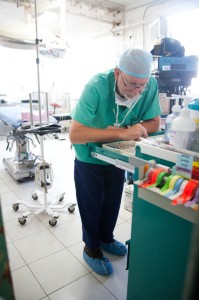 No, the volunteers are not there only to answer the urgent need at a particular time, as was the case for other earthquake relief organizations. We must emphasize the durability of the presence of the volunteers, even if that presence is periodic. They must be considered like brothers and sisters with whom cohabitation is most desirable if one thinks about the existence and survival of the Organization. And, it is very important to embrace any interpersonal difficulties that occur as a result of cultural differences as important opportunities to forge greater understanding and greater team strength. The volunteers represent for HSC and its staff the wealth of Diversity, aimed at saving the modern world. If the mixing of the races has contributed to the reduction of certain diseases, the mixing of the cultures will constitute the oar that guides the direction of Humanity on a journey and to a destination that makes bearable the vicissitudes of the life.
No, the volunteers are not there only to answer the urgent need at a particular time, as was the case for other earthquake relief organizations. We must emphasize the durability of the presence of the volunteers, even if that presence is periodic. They must be considered like brothers and sisters with whom cohabitation is most desirable if one thinks about the existence and survival of the Organization. And, it is very important to embrace any interpersonal difficulties that occur as a result of cultural differences as important opportunities to forge greater understanding and greater team strength. The volunteers represent for HSC and its staff the wealth of Diversity, aimed at saving the modern world. If the mixing of the races has contributed to the reduction of certain diseases, the mixing of the cultures will constitute the oar that guides the direction of Humanity on a journey and to a destination that makes bearable the vicissitudes of the life.





